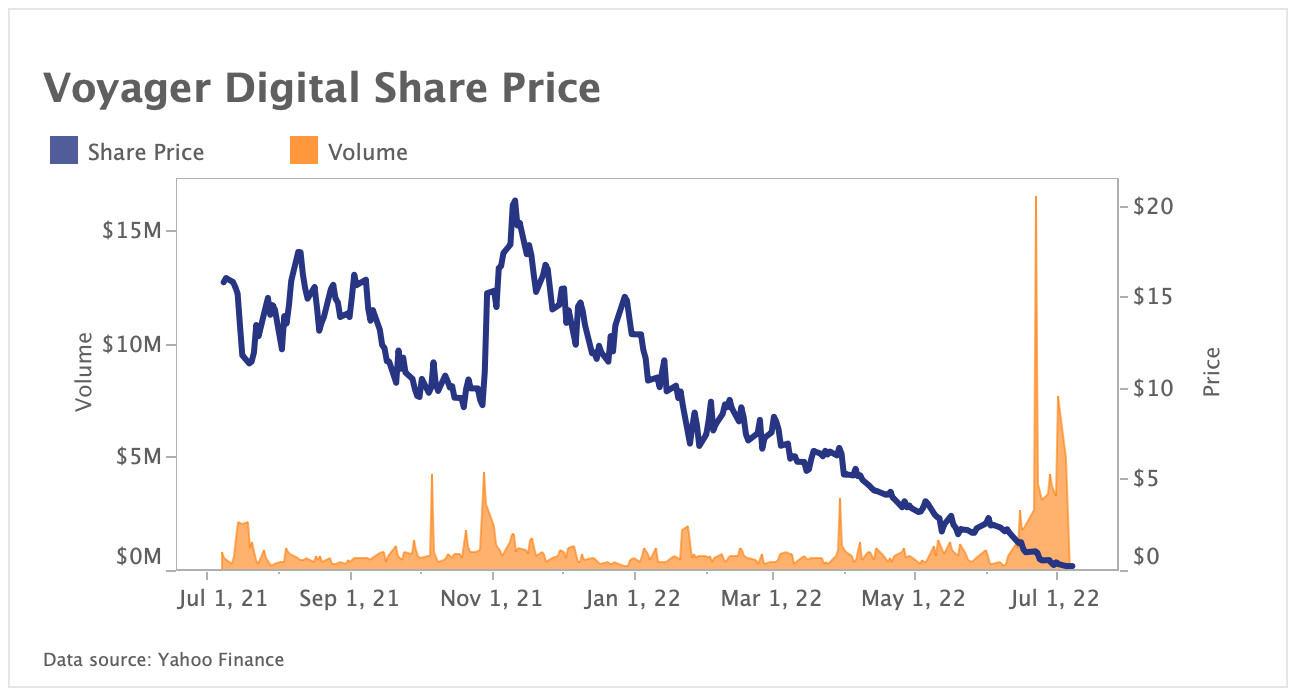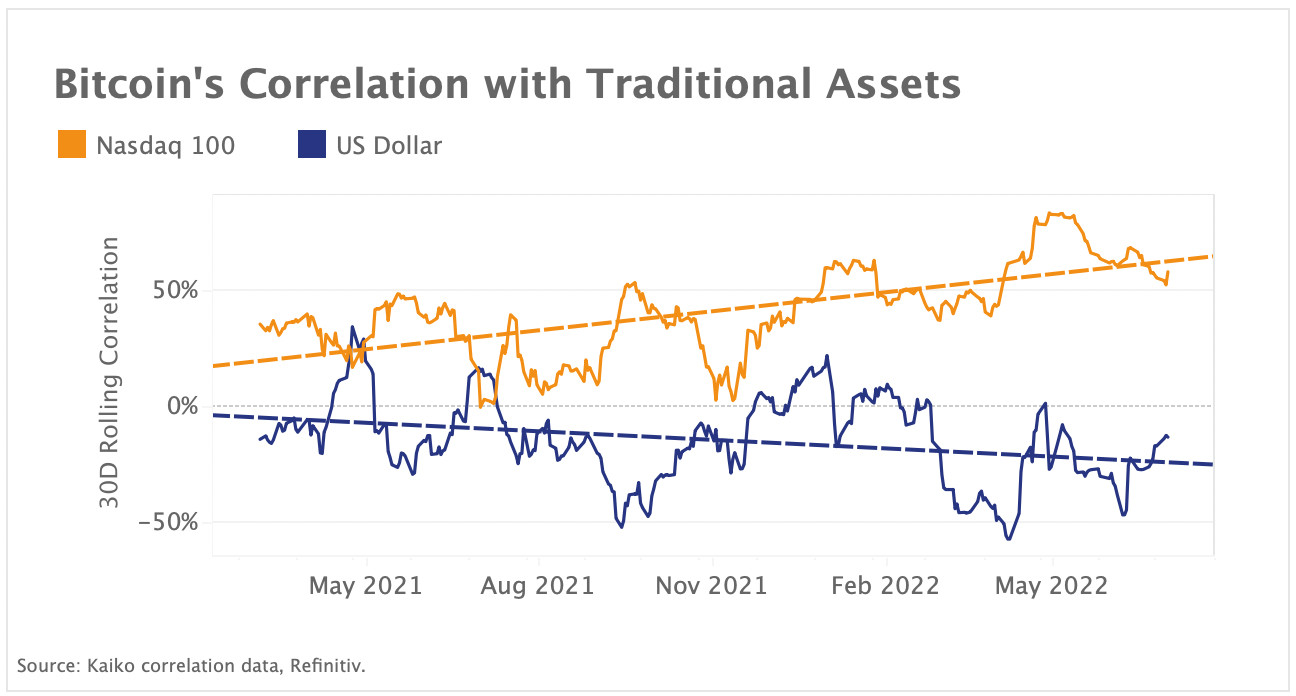A summarizing review of what has been happening at the crypto markets of the past week. A look at trending sectors, liquidity, volatility, spreads and more. The weekly report in cooperation with market data provider Kaiko.
The last 7 days in cryptocurrency markets:
- Price Movements: Solana ecosystem tokens have disproportionately struggled amid several network setbacks.
- Order Book Liquidity: Altcoin volumes aggregated across the biggest exchanges have fallen to just 43% of total volumes, from a peak of 71% last year.
- Derivatives: Open interest has recovered slightly in July and funding rates re-set to neutral.
- Macro Trends: Bitcoin's inverse correlation with USD has deepened throughout 2022 as the greenback hits 20-year highs.
Bitcoin stages modest recovery despite continued contagion

Crypto markets staged a modest recovery last week despite a new round of entities claiming exposure to 3AC’s meltdown. Both Blockchain.com and Deribit revealed they are creditors of the beleaguered hedge fund, while Voyager Digital officially filed for bankruptcy, with reportedly 60% of their loan book granted to the fund. The Celsius saga further deepened this week after a pseudonymous DeFi asset manager filed a suit claiming the lender had not paid them for their services. The suit alleges extremely poor risk management and no hedging for client funds deployed in high-risk DeFi protocols managed by an external asset manager. While the crypto market contagion remains ongoing, Bitcoin (BTC) managed to close the week above $20k and Ethereum (ETH) above $1.1k.
Solana ecosystem struggles
Solana, one of the top alternative Layer 1 blockchains, has had a particularly difficult year marked by multiple network halts and decreasing usage. According to Solscan, daily transactions at the beginning of the year hovered around 80mn; this figure has decreased to 35mn. This has been reflected in the price action for tokens of most of the major Solana protocols. Tulip, the top yield aggregation protocol, has dropped nearly 98%, while Raydium, the second largest DEX by TVL according to DeFiLlama, is down almost 95%.
Solana’s SOL token has fared the same as many of the protocols built on it; Serum (DEX), Solend (lending), and Mango (derivatives trading) are all down over 85% on the year. Just last week the network faced further complications after a SOL investor filed a lawsuit alleging the token is an unregistered security that has only benefitted insiders.
Altcoins lose market share during latest downturn
The volume market share for altcoins, defined as everything except Bitcoin and Ethereum, has declined from a peak of 71% in April 2021 to just 43% now. In that same time, ETH and BTC both doubled their market share from 13% to 24% and 16% to 33%, respectively. This reflects the typical bear market narrative in which traders and investors turn away from more speculative tokens and towards the two most established. BTC and ETH volumes have also been bolstered by a variety of events, including the Terra collapse and Celsius’s troubles with Lido Staked Ether. Most recently, Binance and Binance.US removed trading fees for BTC pairs; as the world’s largest exchange this will likely have a noticeable impact on total volume market share.
Voyager Digital files for bankruptcy as shares plummet
Public company Voyager Digital is the latest domino to fall in the crypto credit crisis, filing for chapter 11 bankruptcy last week. The Toronto Stock Exchange soon paused trading for the company's shares, which are down 99% since their peak in March 2021. The lending firm and brokerage blamed their struggles on prolonged volatility and contagion, however it has been rumoured they lent Three Arrows Capital, a hedge fund at the heart of the contagion, $650m with little to no collateral. The bankruptcy filing comes after the broker suspended all activity on the platform and after Alameda Research had extended a $500m line of credit in order to see it through this liquidity crisis. Alameda had also invested $75m and owned 9% of Voyager shares, which look in dire straits in light of the bankruptcy filing.
Bitcoin’s correlation with the U.S. Dollar is falling
Bitcoin’s correlation with the US Dollar has been on a downward trend over the past year, averaging -0.3 in Q2, up from nearly zero a year ago. This has been mirrored by Bitcoin’s rising correlation with tech equities. The U.S. Dollar index (DXY) is up 1.8% last week as the Euro - which accounts for nearly 60% of the index, sank to a 20-year low amid mounting recession fears in Europe. The EUR/USD has been closing on parity, which is an important psychological threshold and if broken, could inject volatility in the market. Overall, the Dollar has outperformed most asset classes YTD, benefiting from safe-haven flows amid global risk aversion.








